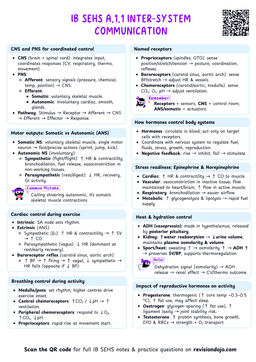The Proficient Execution of Specific Skills Requires the Correct Attentional Focus
What is Attentional Focus?
Attentional Focus
Attention is essential for successful skilled performance in sport and exercise, involving the concentration of mental activity on relevant tasks.
Types of Attentional Focus
- Attentional focus varies based on two dimensions: width (broad or narrow) and direction (external or internal).
- Broad attentional focus:
- Ability to perceive multiple events simultaneously.
- Example: Ice hockey player monitoring puck position, opponents, and shooting opportunities.
- Narrow attentional focus:
- Focus on one or two specific cues.
- Example: Tracking the shuttlecock in badminton.
- External attentional focus:
- Attention directed toward external factors.
- Example: Observing an opponent's movements in baseball.
- Internal attentional focus:
- Attention focused internally on thoughts or feelings.
- Example: A high jumper mentally preparing for their jump.
- Broad attentional focus:
Example
- Examples in Sport:
- Broad External: Ice hockey player quickly assessing the defensive setup.
- Broad Internal: Volleyball coach strategically planning team tactics.
- Narrow External: Table tennis player closely watching opponent's paddle movement.
- Narrow Internal: Gymnast mentally rehearsing their routine to manage emotional states.
Attentional Focus and Motor Learning
- Attentional Focus Types:
- Associative: Attention directed internally toward bodily sensations (e.g., monitoring muscle fatigue).
- Dissociative: Attention directed externally, away from bodily sensations, focusing instead on the external outcome of movements.
- Dimensions of Attentional Focus:
- Width: Broad (many cues simultaneously) vs. Narrow (few or single cues).
- Direction: Internal (focus on body or thoughts) vs. External (focus on movement effects or outcomes).
- Impact on Motor Performance:
- Effectiveness: Improved accuracy, consistency, and reliability of motor skills.
- Efficiency: Movement performed fluently and economically, requiring minimal physical and mental effort.
- Evidence supports that an external focus of attention (focusing on the outcome of the movement, such as the ball trajectory) typically leads to better motor performance and faster skill acquisition compared to an internal focus (focusing on body movements).
- Benefits observed across various sports: soccer, volleyball, basketball, swimming, running, kayaking, gymnastics.
- An external focus accelerates learning and helps achieve high skill levels more rapidly.
There are three cognitive dimensions:
- Concentration: Actively investing mental effort into crucial aspects of performance (e.g., focusing on ball contact rather than crowd distractions).
- Selective Attention: Ability to filter out distractions and focus specifically on task-relevant information (e.g., tracking the ball’s trajectory despite goalkeeper movements).
- Divided Attention: Capacity developed through practice to simultaneously manage multiple tasks or actions (e.g., passing the ball accurately while looking in another direction).
- Key distinctions in sport:
- Concentration: Clear, present focus.
- Focus: The central point of attention.
- Attention: Active awareness of surroundings.
- Aspects of concentration crucial for athletes:
- Identifying and maintaining focus on important cues.
- Sustaining focus over time.
- Situational awareness.
- Flexibility to shift focus appropriately during performance.
Distractions can reduce performance by diverting attention from critical cues, increasing errors, and disrupting flow.
Situation Awareness
Situation Awareness
- Athletes' ability to quickly understand and interpret their environment during performance, enabling effective decision-making under pressure (e.g., making correct decisions in the final moments of a match).
- Athletes with strong situation awareness:
- Often praised for superior decision-making and timing.
- Demonstrate attentional flexibility, shifting focus dynamically between broad (external and internal) and narrow attentional states as required by the circumstances.
- Shifting attentional focus:
- Easier in self-paced sports (e.g., archery), where athletes control the timing.
- More difficult in externally paced sports with high time demands (e.g., 400m hurdles), as athletes must simultaneously focus on multiple factors such as hurdle position, stride pattern, competitors' positions, and pacing strategies.
Controlled Distraction: A Key Strategy
- Controlled distraction involves deliberately managing distractions to maintain focus.
- Athletes use techniques like:
- Routines: Pre-shot routines in golf or free-throw rituals in basketball.
- Trigger Words: Simple cues like focus or breath to redirect attention.
- Mental Practice: Visualizing successful performance to build confidence and reduce anxiety.
- Performance Goals: Clear behavioural outcomes guiding focus toward specific, relevant, and controllable actions.
- Deliberate Decisions: Consciously investing mental effort to focus on important task-related information.
A golfer facing a difficult shot might use a routine to focus on the swing mechanics, blocking out crowd noise and negative thoughts.
Note- Non-linear Pedagogy and Attentional Control
- Definition: Non-linear pedagogy incorporates attentional focus considerations into coaching methods to enhance skill learning and performance through adaptive environments.
- Focus shift: Encouraging athletes to concentrate on external outcomes rather than internal thoughts helps athletes self-organize movements naturally, reducing conscious interference.
- Self-organization: Learners adjust their actions based on their individual needs and environmental context, enhancing adaptability.
- Example (sports):
- A tennis coach, rather than directly instructing on court positioning, could prompt the player to reflect on their positioning in relation to their opponent's actions, helping them identify optimal positions through experiential learning.
Attentional Narrowing and Arousal
Attentional Narrowing
Attentional narrowing is a psychological state where a person focuses on a small set of information, ignoring other stimuli. It can occur during stressful situations, and can lead to accidents.
- Attentional narrowing occurs when high arousal levels cause focus to shrink to a few critical cues. This can be beneficial or detrimental:
- Beneficial: A sprinter focusing solely on the starting gun.


